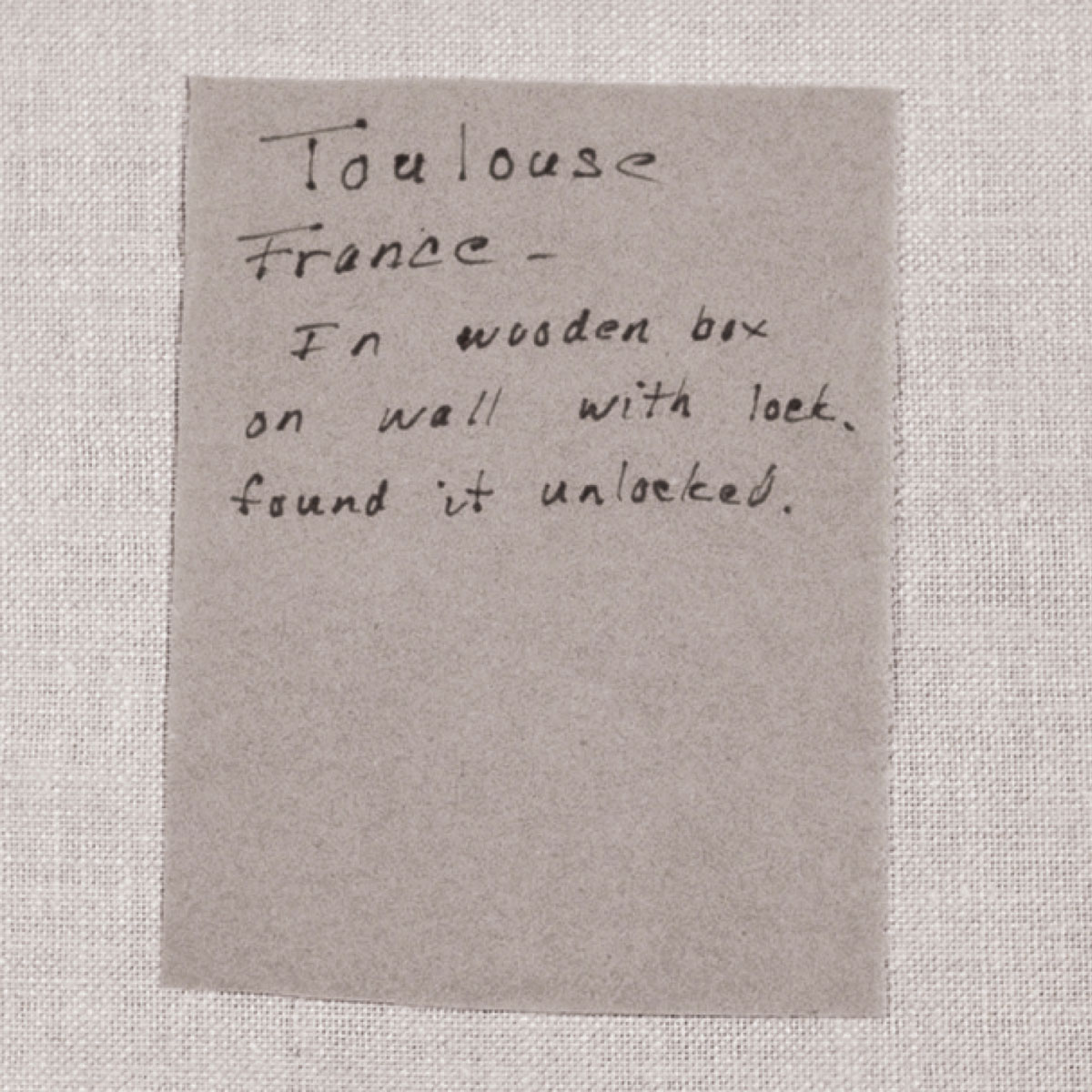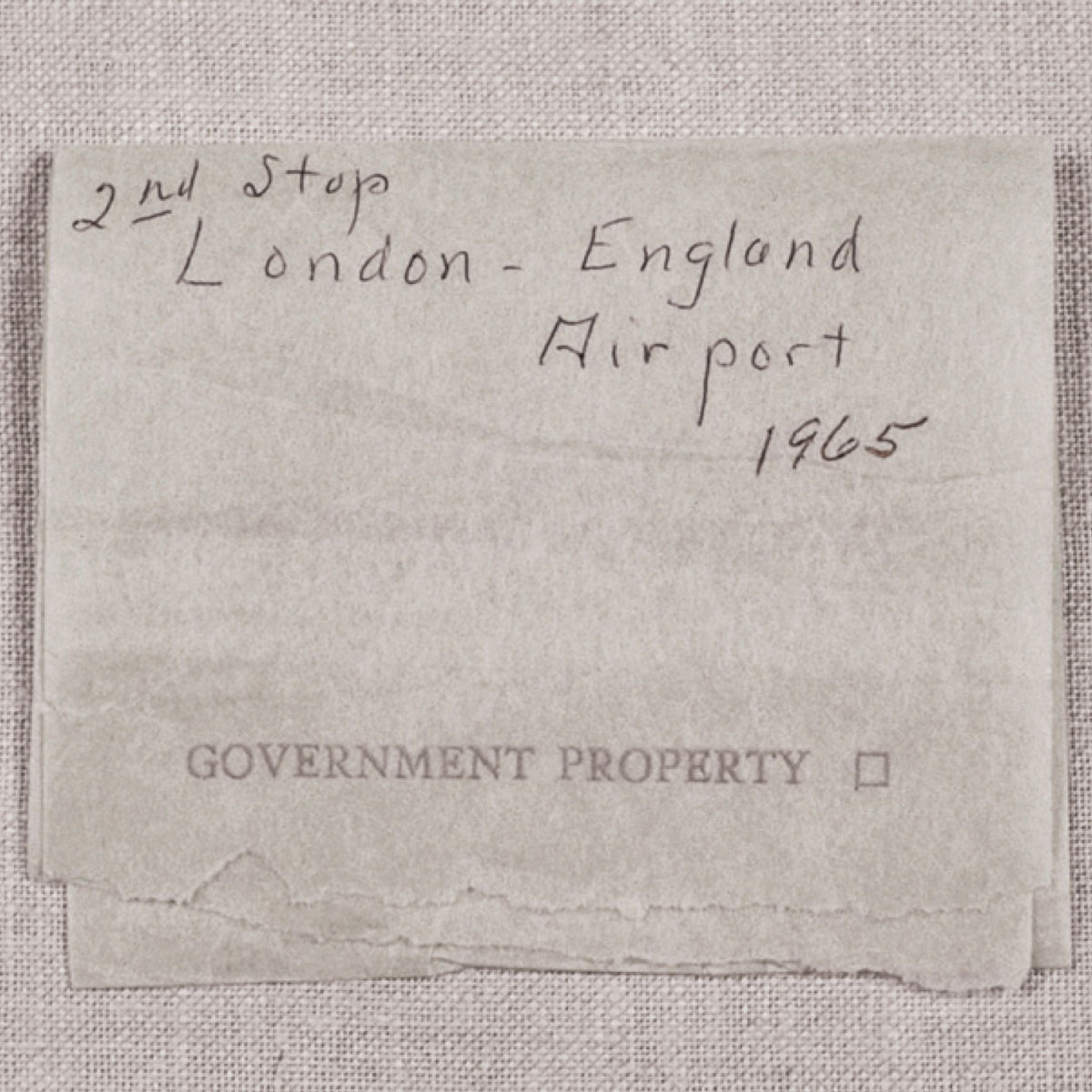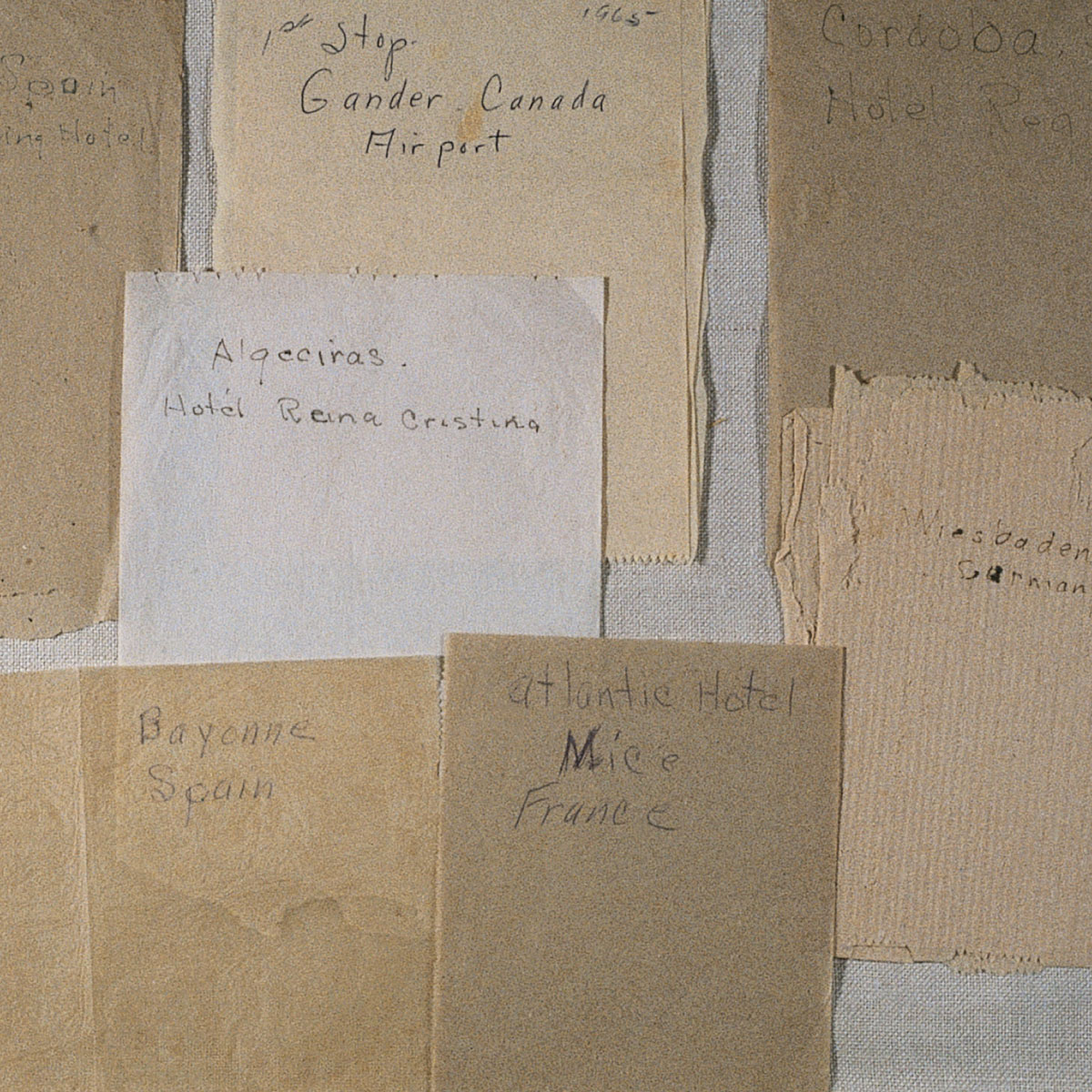Leftovers / The Secret Collection
Special tissue
Carrie Cooperrider
“Leftovers” is a column that investigates the cultural significance of detritus.
In the 1950s and 1960s, Katherine Evans Cooperider compiled a secret collection of European toilet paper. Although private collections are commonplace and widely displayed in museums and galleries, a secret collection is revealed only through the creation of an intimate pact or the intervention of accidental circumstances.
It was the latter that brought my grandmother’s collection to light. The single sheets of toilet tissue were discovered by us, her family, after her death, modestly housed in a manila envelope among other papers. I don’t know what Gramma Kathy was thinking when she made her secret collection, though I can surmise the following motivations: a xenophobic delight in this most palpable proof of the inferiority of European culture (our toilet paper is much softer!); a kleptomaniacal satisfaction in finding the most economical and lightweight souvenirs imaginable; even an æsthetic appreciation for the subtle nuances of the individual papers. What ever her reasons, she held on to the tissue for decades, even as the increasing circumscription of her living space caused other possessions to be jettisoned. As far as I know, she never breathed a word about her toilet paper collection to anyone. There is shame associated with the secret collection; there is an unspeakable reason for concealment. Though a highly pragmatic person and the daughter of farmers, Kathy was probably not insensitive to the stigma attached to all things bearing even a whiff of the excremental. And, as with many covert collections, the issue of theft stole its way in. The toilet paper in her collection had never been for sale, nor was it a gift.


I wonder: Did she surreptitiously hit WCs for which she had no immediate need, solely for the purpose of acquiring a new and unique sample for her collection? Did she rationalize it by telling herself that, after all, it was only a small amount? Or did she make a little deal with herself when visiting toilets for “legitimate” purposes: “I will tear off X amount of paper, which I would have used for myself anyway, and then from that amount, ‘save’ a bit for my collection,” thus side-stepping the theft question? One sample is quite clear about proprietorship—it’s stamped “Government Property.” That she experienced a sense of culpability as a collector is revealed in the comment she inked on the sample from Toulouse: “In box on wall with lock—found it unlocked.” Due to the experience of living through the Depression and being a young widow with four children, my grandmother was possessed, necessarily, of a thrifty imagination: souvenirs, because they were unnecessary, were wasteful. To frivolously remove a needed commodity like toilet paper from its appropriate setting must have seemed unconscionable on some level. That her guilt was superceded by an exultant sense of her own good fortune is evidenced by the fact that she nonetheless claimed her prize.
After this legacy entered my custodianship (through the grace of my father, who is the actual owner of the collection and from whom it is on more or less permanent loan), I built a special case for it made of cast-off furniture legs and empty French wine crates, fitted out with a demure little skirt. It became part of an installation I exhibited in New York. The installation’s inspiration came from a small leather-bound, gilt-edged journal I had found in a second-hand shop, completely blank save for an inscription in gold: “My Trip to Europe, 1955, Ethel L. Mumma.” The journal was ambiguous and the implicit narrative tantalizing. Perhaps Ethel only wished to go to Europe but never got further than the stationery store to purchase her book and gold pen—or perhaps she did go but was so busy with her new identity as a tourist that she never had the time to write.

I fleshed out a portrait of Ethel through the installation, The Ethel L. Mumma European Wing of the Mundaneum/World Museum, which echoed the experience of visiting “period” rooms. As with all period rooms, it reflected not only historical but social context; Ethel’s desire to visit Europe seemed to me emblematic of a kind of 20th-century, middle-class American cultural longing—a nostalgia for a European heritage too distant to be authentic, coveted because it conferred a level of sophistication not available domestically, and despised because it was snooty and put on airs. In my imagination, Ethel L. Mumma became an alter ego for my grandmother, and I credited Ethel with some of my grandmother’s experiences. In effect, I sent Ethel to Europe.
With the toilet paper collection my grandmother (and Ethel) could indulge both their desire and disdain: They had been to Europe, seen its dazzling traditions of high culture, and returned with a kitsch souvenir that not only made clear the decisive difference between Americans and Europeans, but did it in a way that made a person feel lucky to be independent of Europe’s patrimony.
Carrie Cooperrider is an artist living in New York. She is also the director of education at Snug Harbor Cultural Center on Staten Island, New York.
Spotted an error? Email us at corrections at cabinetmagazine dot org.
If you’ve enjoyed the free articles that we offer on our site, please consider subscribing to our nonprofit magazine. You get twelve online issues and unlimited access to all our archives.